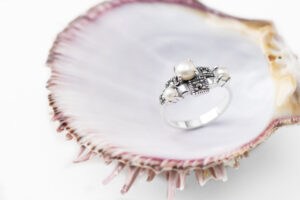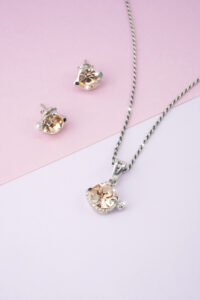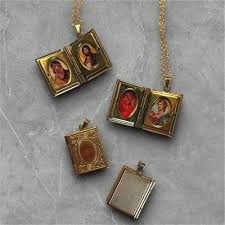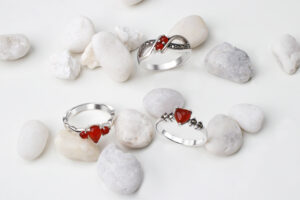The jewelry industry has long been shaped by tradition, elegance, and generational gifting. But Gen Z and younger millennials are flipping the script and bringing fresh, sometimes unexpected preferences to the table.
Today’s younger retail customers aren’t necessarily loyal to diamonds or drawn to gold in the way their parents were. They’re bold, ethically conscious, and deeply expressive. Their taste in jewelry is less about legacy and more about identity.
Understanding these shifts isn’t just helpful it’s critical for brands hoping to stay relevant. Here’s what might surprise you about the jewelry preferences of today’s youngest shoppers.
The Surprising Jewelry Preferences of Younger Retail Customers

1. Meaning Matters More Than Materials
While previous generations may have prioritized karat weight or gemstone rarity, Gen Z customers want pieces that say something about who they are, what they believe, or what matters to them.
What They’re Buying:
- Birthstone pieces with personal significance
- Zodiac-themed collections
- Jewelry tied to mental health or social causes
Implication: Narrative and emotion drive sales more than material alone.
2. Silver Is Back (and More Accessible)
Silver is enjoying a strong comeback, particularly among younger wearers who appreciate its affordability, versatility, and cooler tones.
Why Silver Wins:
- Easier to mix and layer
- Often feels more gender-neutral
- More affordable than gold but still precious
Trend Watch: Sterling silver with oxidized finishes and matte textures is gaining traction for its modern, moody aesthetic.
3. Gender-Neutral and Inclusive Designs Are in Demand
Younger buyers value jewelry that transcends gender norms.
Popular Styles:
- Chunky chains and bold rings with unisex appeal
- Minimalist earrings and studs marketed without gendered language
- Brooches and pins for all styles and identities
Tip for Retailers: Ditch the “men’s” and “women’s” labels highlight the vibe or styling instead.
4. Ethical and Sustainable Sourcing Is a Must
This demographic is highly conscious of where their jewelry comes from and how it was made.
Key Preferences:
- Recycled metals and lab-grown stones
- Transparent supply chain information
- Carbon-neutral or low-impact packaging
Proof Point: Brands that display ethical certifications or share artisan stories earn trust and loyalty.
5. Personalization Is the Ultimate Luxury
Customization is big especially when it’s fast, easy, and affordable.
Common Requests:
- Initial charms and engraved pendants
- Custom ring sizing and stacking options
- Mix-and-match chains with interchangeable elements
Retail Strategy: Offer modular systems or personalization stations in-store or online.
6. Micro-Collections and Capsule Drops Outperform Big Launches
Forget the traditional spring/summer drop young customers respond better to focused, limited-edition releases.
Why It Works:
- Feels fresh, exclusive, and designed “for them”
- Builds anticipation and drives faster purchasing
- Easier to promote on social media and through influencers
Tip: Tie drops to culture, moodboards, or social movements not just seasons.
7. They’re Comfortable Mixing Price Points
Younger buyers are just as happy pairing a $20 ring with a $200 necklace.
How They Shop:
- Value expressive design and ethical sourcing more than price
- Prioritize “how it makes me feel” over long-term investment
Retail Insight: Offer a range of price points within a single design aesthetic or brand voice.
8. They Shop Through Instagram, TikTok, and Peer Recommendations
This is a generation raised on visual content and social validation.
Influencing Factors:
- Peer unboxings and micro-influencer reviews
- Shoppable Instagram or TikTok product tags
- Short-form videos showing styling or “try-on” moments
Marketing Tip: Don’t just show jewelry show the lifestyle and emotion around it.
9. Rings, Earrings, and Layering Pieces Lead
Among younger buyers, these categories consistently perform best.
Most-Loved:
- Statement rings and stackable bands
- Ear cuffs, climbers, and asymmetrical earrings
- Layered necklaces and chain mixes
Merchandising Move: Curate “stack & layer” sets and encourage experimentation.
10. They Want to Be Part of the Design Story
This group doesn’t just want to buy they want to co-create.
Examples:
- Voting on future designs via social polls
- Submitting moodboards or style ideas
- Joining insider groups or “first look” launches
Engagement Strategy: Invite them behind the scenes digitally or in real life.
Connection Over Convention
Young jewelry customers are savvy, expressive, and values-driven. They’re not bound by tradition or legacy they want pieces that reflect their identity, values, and vibe.
To win their loyalty, brands must offer more than sparkle. They must offer storytelling, transparency, and an invitation to co-create.
Because for the next generation of buyers, jewelry isn’t just an accessory.
It’s a personal statement. And they’re ready to wear it.








